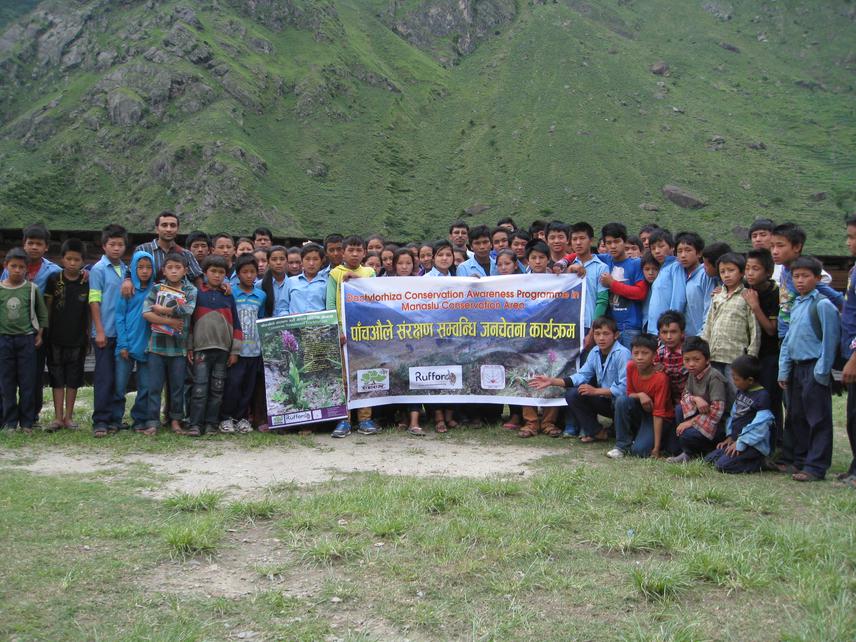Prakash Bhattarai
Other projects
17 Apr 2015
Community Participation for Conservation of Threatened Orchid Dactylorhiza hatagirea in Jumla District
The aims of the study are to assess the population status, distribution, and identification of conservation threats which will be imperative for the conservation and proper management of endanger orchid species.
Dactylorhiza hatagirea is a terrestrial, erect herb, up to 60 cm high, with palmately divided tuberoids. It is a Himalayan endemic medicinal orchid which is found in Hindu Kush Himalaya range at an altitude between 2800-4200 m a.s.l. (IUCN, 2004). It has been identified as the endangered species listed by CITES and vulnerable species listed by CAMP.

School awareness programme.
Dactylorhiza hatagirea is an inherently slow-growing and poorly regenerating species because of pollinator specificity and requirement for mycorrhizal association (Sharma et al., 2005), thus, an important species for conservation. It is an important medicinal plant species prioritized by government for research and management (DPR, 2006). According to Forest act 1993 and Forest Regulation 1995, Nepal Government has banned the rhizome of D. hatagirea to collect, trade and process. Although this is banned species, unwise harvesting, unscientific use and illegal trading is being practiced in Manaslu Conservation Area so immediate conservation measures must be taken.
The major objectives of this study are to assess population biology, distribution and abundance, threats and awareness, and understanding of local stakeholder for Dactylorhiza hatagirea conservation. The ecological (technical) work will provide the baseline information of plants in the natural habitat which will directly help to launch appropriate conservation action. It will play key role in species conservation. Objective of community approaches study will increase the level of awareness among forest users groups, shepherds and school students around conservation area. Besides, the conservation programme helps to distinguish the value of local biodiversity conservation and the importance of the target species in ecological balance.
This project will point out the factors causing dwindling and the mitigation measures for its conservation. Trained community monitors will mobilize to create community-based awareness-building methodologies and collection of data of target species for long term monitoring of the programme. The capacity of local user groups will be strengthened for forest and grassland management which will play a significant role in long term nature conservation.